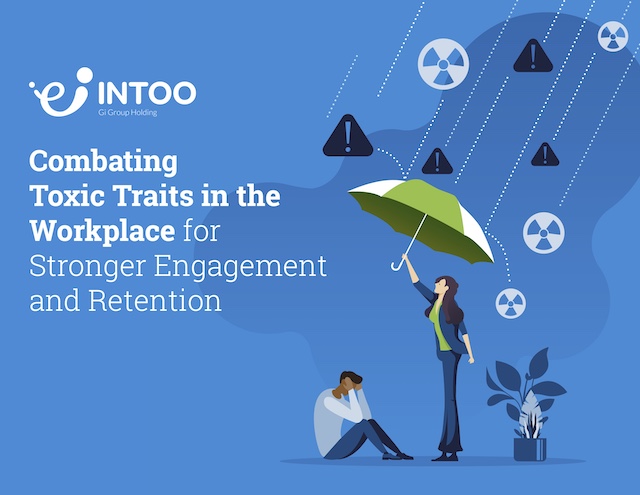Employee attrition is a crucial metric that measures the rate at which employees leave an organization over a specific period. It is an inherent aspect of any workforce and can significantly impact a company’s overall performance, culture, and bottom line. Employee attrition can occur for various reasons, such as finding external job opportunities or career advancements, personal reasons, dissatisfaction with work conditions, or issues with management. While some level of attrition is customary and even healthy for organizations, excessive or uncontrolled attrition can disrupt the stability of a workforce, leading to several consequences. It can erode institutional knowledge, as departing employees take with them valuable experience and insights. This can hinder productivity and lead to increased workloads for the remaining staff. Also, the constant need to hire and train new employees can strain resources and divert focus from core business objectives.
High attrition rates may also impact employee morale and job satisfaction, contributing to a negative work environment. To mitigate these effects, organizations need to implement effective employee retention strategies that foster employee engagement and create a more stable and productive workplace.
What Are the 3 Types of Employee Attrition?
1. Involuntary attrition
Voluntary attrition occurs when employees leave the organization due to circumstances beyond their control, such as layoffs, termination , or furloughs. It often results from organizational restructuring, performance issues, or economic factors.
Involuntary attrition can lead to a sense of instability among the remaining workforce and may impact morale and productivity. A good example is the recent layoffs in the tech industry, which resulted from the downward in the economy. Meta (parent company of Facebook), Twitter, Microsoft, and other tech giant companies dismissed large portions of their workforce, and experienced negative backlash from their remaining employees.
2. Voluntary attrition
Voluntary attrition happens when employees leave the organization of their own accord. This could be due to career advancement opportunities, better offers from other companies, dissatisfaction with their current job or work environment, or personal reasons. Voluntary attrition can challenge the organization’s ability to retain top talent and maintain a skilled workforce. It can also result in the loss of valuable institutional knowledge and expertise because, unlike involuntary attrition, organizations often lack a plan and strategies in place to replace these talents.
3. Retirement
Retirement attrition occurs when employees exit the workforce upon reaching the eligible retirement age or choosing to retire early. This form of attrition can result in the loss of experienced and knowledgeable personnel, potentially leading to gaps in institutional knowledge and skills that are difficult to replace.
Employee Attrition Vs. Turnover
While the terms “attrition” and “turnover” are often used interchangeably, they have nuanced differences. Employee attrition refers to the process of employees leaving an organization, encompassing various reasons such as retirement, resignation, or termination. It measures the natural movement within the workforce and reflects the overall flux of personnel.
In contrast, employee turnover is a broader concept that includes both attrition and hiring. It represents the complete cycle of employees entering and exiting an organization within a specific timeframe.
Attrition provides insights into the stability and longevity of the workforce, indicating how frequently employees depart the organization and need to be replaced. This term focuses solely on departures and does not consider the influx of new employees.
Conversely, turnover encompasses not only the employees who have left but also accounts for the newly hired employees brought in to fill the vacant positions.
How to Calculate Employee Attrition Rate
Measuring attrition is a vital step in understanding workforce dynamics. The attrition rate, expressed as a percentage, quantifies the rate at which employees depart over a specific period. The formula is simple yet revealing:
Attrition Rate = (Number of Employees Who Left / Average Number of Employees) x 100
For example, if a company starts the year with 200 employees, ends with 180, and loses 20 employees during the year, the attrition rate would be:
(20 / ((200 + 180) / 2)) x 100 = 10%
 How Employee Attrition Affects the Workplace
How Employee Attrition Affects the Workplace
Employee attrition, the natural process of employees leaving an organization, triggers a series of consequences that shape the workplace. Understanding its effects is crucial for organizations to proactively address its implications. Read below for some examples of how it can negatively affect the workplace:
1. Loss of institutional knowledge
Experienced employees leaving means valuable expertise and insights vanish, impacting operational efficiency and continuity.
2. Reduced productivity
Vacancies or temporary staffing disrupt workflows, causing temporary dips in productivity and morale.
3. Impact on morale and engagement
Attrition breeds uncertainty and insecurity, leading to emotional stress, and decreased morale and engagement.\
4. Increased workload and stress
Remaining employees take on extra tasks, leading to stress, burnout, and potentially lower quality work.
5. Disruption in team dynamics
Attrition alters teams, causing temporary disruption in collaboration, synergy, and performance.
6. Recruitment challenges
High attrition deters top talent due to instability, while recruitment becomes resource-intensive.
7. Innovation and creativity impact
Overburdened employees may lack bandwidth for innovation, affecting the organization’s competitiveness.
8. Long-term organizational reputation
Attrition impacts internal morale and external stakeholder trust, affecting relationships and reputation.
5 Ways to Manage Attrition in Your Business
As we just mentioned, employee attrition can affect your business negatively if not managed properly. That is why it is very important to offer various programs and services that foster employee satisfaction and loyalty. Here are five strategies to consider:
1. Training and development programs
Implement robust training and employee development plans to enhance skills and knowledge for your staff. This can include workshops, seminars, online courses, and mentoring programs. When employees see that the company is invested in their professional growth, they are more likely to stay and contribute positively.
2. Employee wellness/proper benefits
Offer comprehensive wellness programs that promote physical, mental, and emotional well-being. This could involve gym memberships, wellness workshops, stress management resources, and access to counseling services. Providing proper benefits such as health insurance, retirement plans, and paid time off also shows your commitment to employee welfare.
 3. Employee recognition
3. Employee recognition
Establish a formal recognition program that acknowledges and rewards outstanding performance, innovation, and contributions. Recognize employees publicly through newsletters, company-wide meetings, or social media platforms. Personalized recognition can boost morale and create a sense of belonging.
4. Exit interviews
Conduct systematic exit interviews with departing employees to gain insights into their reasons for leaving. Use this information to identify trends, areas for improvement, and potential issues within the organization. Analyzing exit interview data can help you make informed changes to reduce future attrition.
5. Alumni network
Create an alumni network to maintain connections with former employees. This network can serve as a resource for potential rehires, referrals, and business partnerships. Staying in touch with former employees not only helps in re-engaging them but also expands your organization’s professional network.
Employee attrition, though often underestimated, is a force that shapes the very essence of a workplace. Its ripple effects can either disrupt or elevate an organization’s trajectory. By understanding its types, differentiating it from turnover, and implementing effective management strategies, businesses can turn attrition into an opportunity for growth and innovation. In every stage of the employee lifecycle, INTOO helps employers protect their brand through effective candidate experience, career mobility, and outplacement services. Contact us to learn how we can make a difference for you and your employees.


 How Employee Attrition Affects the Workplace
How Employee Attrition Affects the Workplace 3. Employee recognition
3. Employee recognition








